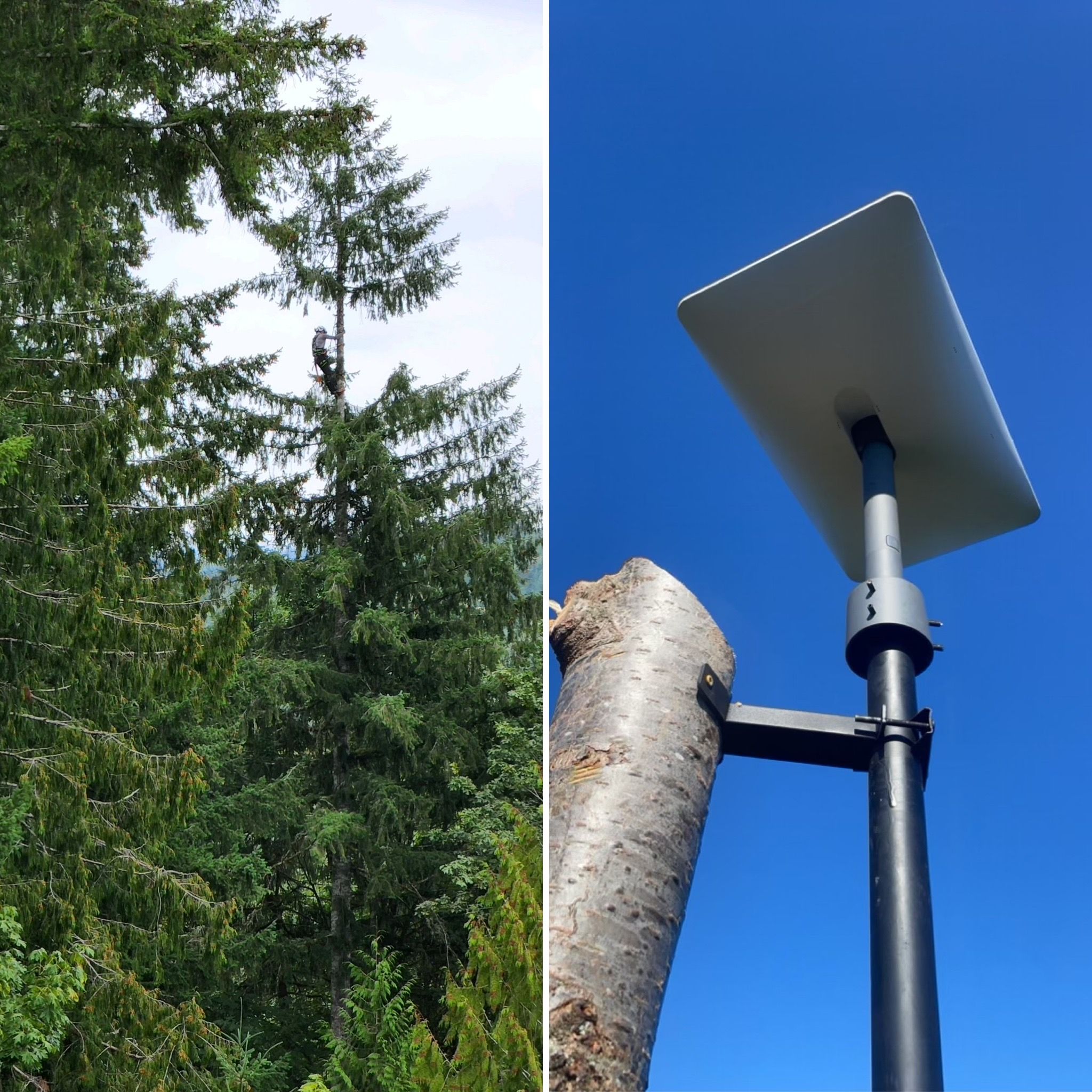Starlink Install
by Andrew on

Installing Starlink satellite dishes in trees, in Washington state can have both advantages and disadvantages, depending on various factors. Starlink is a satellite internet service provided by SpaceX, and it typically involves installing a satellite dish on the ground or on a rooftop to receive internet signals from low Earth orbit satellites. Here are some potential benefits and considerations of installing Starlink dishes in trees at such a height:
Benefits:
- 1. Reduced Obstructions: Placing the satellite dish high up in trees can help minimize obstructions such as buildings or terrain features that might block the line of sight to the satellites. This can improve the quality and consistency of the internet connection.
- 2. Better Signal Reception: Being elevated can provide a clearer line of sight tothe satellites, which can lead to a stronger and more stable internet signal.
- 3. Improved Weather Resistance: At higher elevations, the satellite dish may be less susceptible to ground-level weather conditions, such as heavy snow accumulation or flooding.
- 4. Wildlife and Aesthetic Considerations: Installing the dish high in trees may help mitigate potential interference from wildlife or minimize the visual impact of the satellite dish on the landscape.
Considerations:
- 1. Safety and Accessibility: Installing equipment in trees can be challenging in terms of safety and accessibility. It may require specialized equipment and skilled technicians to safely reach the desired height and maintain the equipment.
- 2. Environmental Impact: Tree installations should be done carefully to minimize damage to the trees and surrounding ecosystem. Additionally, consider the potential impact on local wildlife and vegetation.
- 3. Regulatory and Zoning Issues: Installing equipment in trees may be subject to local zoning regulations, building codes, or environmental restrictions. It'simportant to obtain any necessary permits or approvals.
- 4. Maintenance Challenges: Maintenance and servicing of the equipment could be more difficult and costly when it's located high in trees. Regular inspections and adjustments may be required.
- 5. Equipment Compatibility: Ensure that the satellite dish and associated equipment are designed for such installations and can withstand the environmental conditions at that height.
- 6. Line of Sight: While elevating the dish can improve line-of-sight to the satellites, it's essential to ensure that there are no significant obstacles in the direction of the satellites, as this can still affect signal quality.
Ultimately, the feasibility and benefits of installing a Starlink satellite dish in a tree would depend on the specific location, terrain, and environmental factors. It's advisable to consult with local authorities, SpaceX, or a professional installer to assess whether this is a viable option and to ensure compliance with regulations and best practices.